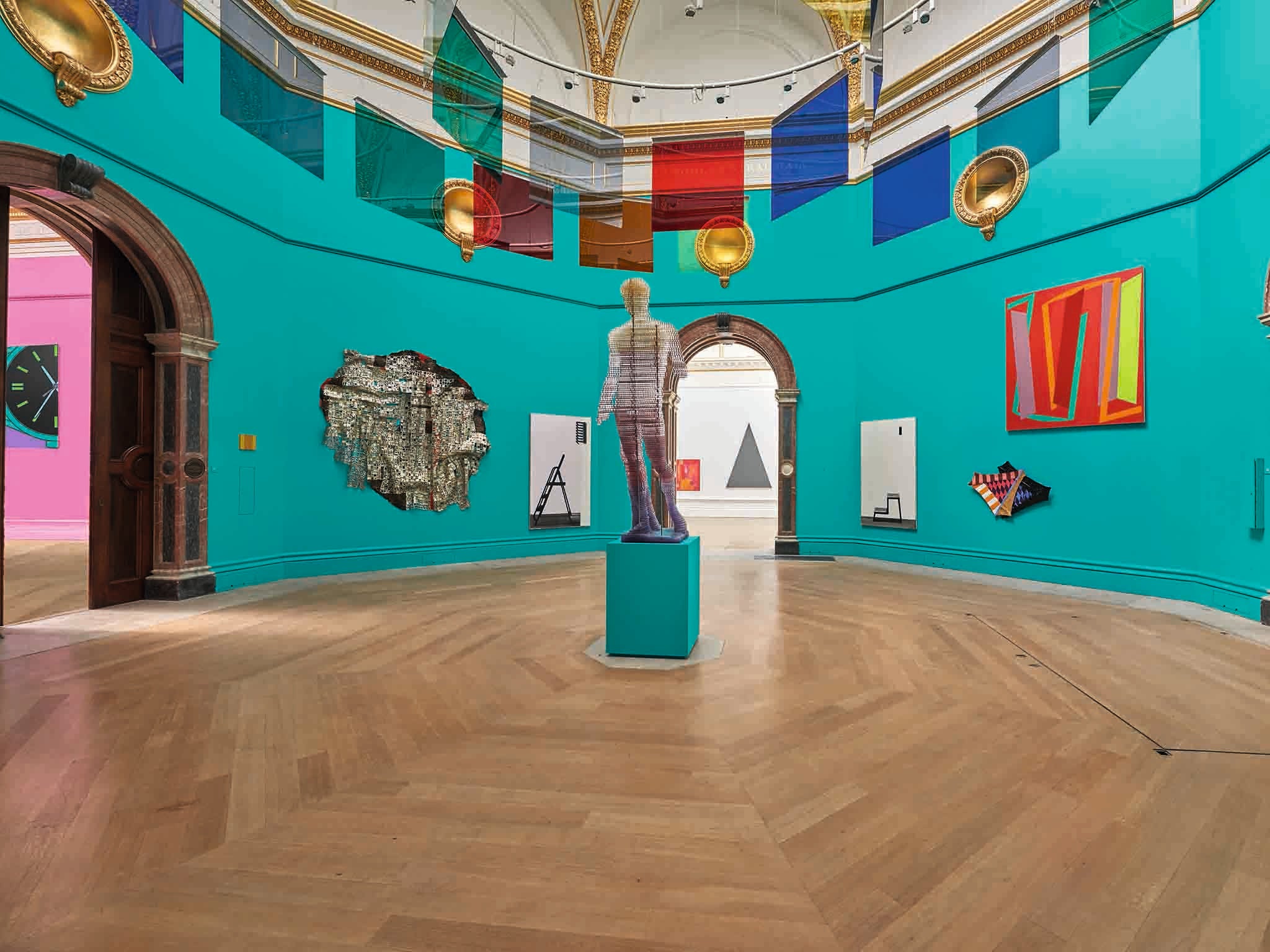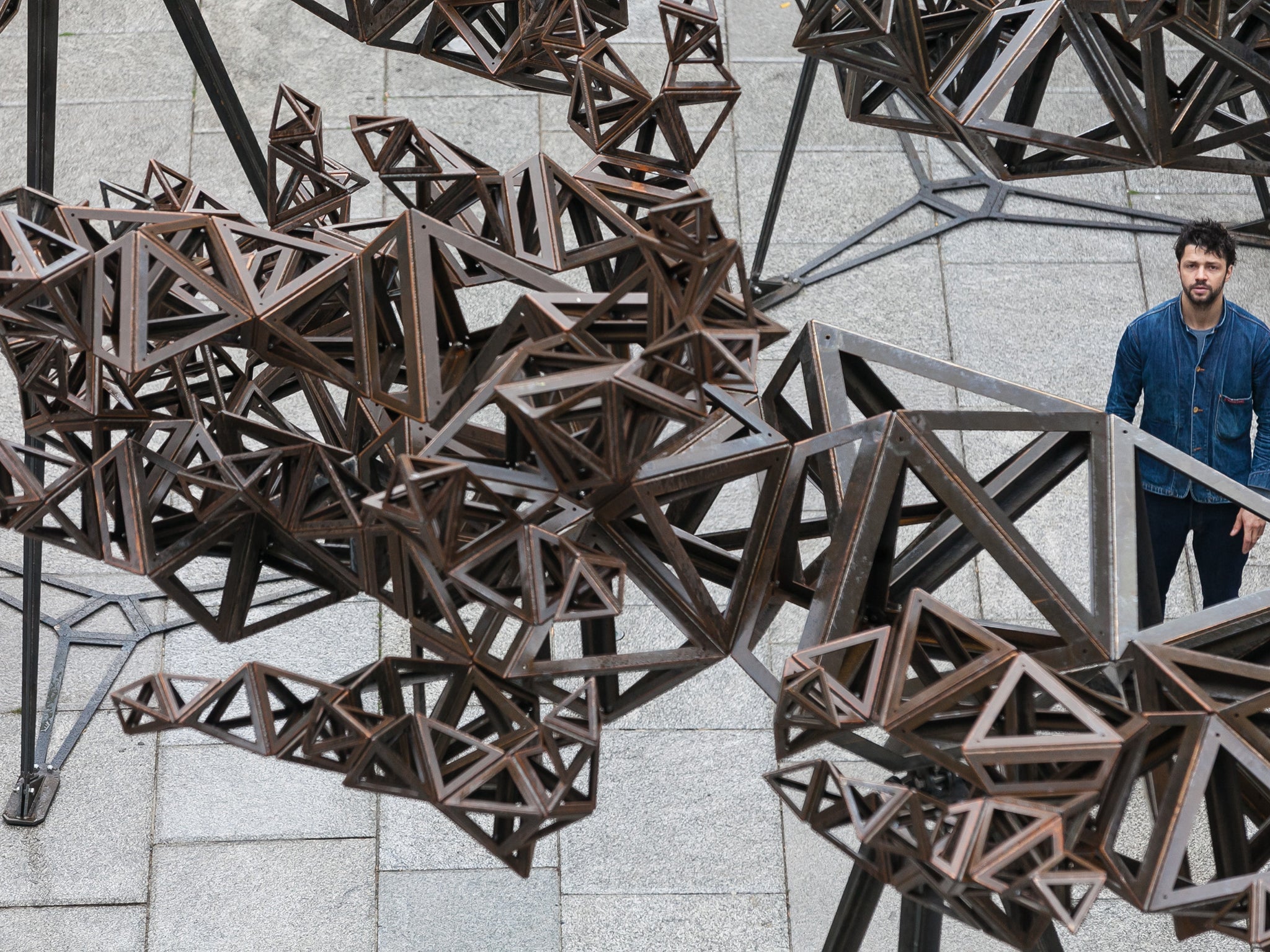The Summer Exhibition, Royal Academy of Arts, review: Has 'co-ordinator' Michael Craig-Martin made it a coherent show?
Perhaps next year the summer show should be split into three shows, instead of trying to cram it all into one exhibition

The Royal Academy’s Summer Exhibition fills a fallow summer period in the art calendar, while the social season of Wimbledon, Henley and big hats are imminent. I always visit and leave depressed from the sheer amount of art and the attempt that never works to put apples and pears along with tinned fruits together in the fruit salad, so that ultimately everything suffers. Has implementing a new strategy of making Michael Craig-Martin “co-ordinator” this year managed to make a coherent show at last? Almost, but no is the answer.
The Royal Academy of Arts has recently been in the news as it announced its campus idea with an ambitious plan by David Chipperfield to bridge the front galleries with the Royal Academy School and rear galleries where the former wonderful if higgledy-piggledy Museum of Mankind once stood. The Royal Academy has always been about painting more then the other arts, a history that was recently featured in Mike Leigh’s Mr Turner, which had an amusing scene from varnishing day when painters took the opportunity to ostensibly help their peers as well as complete their works.
The Summer Exhibition has been shown without interruption since 1789, an admirable record. Out of the 80 Royal Academicians (RAs), there must always be at least 14 sculptors, 12 architects and eight printmakers; the rest are all painters. All the proceeds of sales from the exhibition go towards supporting the Royal Academy Schools, the only free postgraduate school left in the UK.
The portents are good when I arrive. Conrad Shawcross, the youngest RA, has been given leave to fill the courtyard and he does this with panache. The Dappled Light of the Sun, a large muscular steel sculpture uses his familiar trapezoid forms, but lifting them up is new to me and ingenious, allowing the viewer to walk under its canopy. It also allows an amusing view of the sculpture of Sir Joshua Reynolds, the first President of the Royal Academy, as he forlornly clutches his paintbrushes.

Inside and the modernising attempt continues with a jazzy, disco-floor installation on the staircase by invited guest, Glasgow-based artist Jim Lambie; so far so good. Michael Craig- Martin RA, the beloved teacher of a whole generation of artists at Goldsmiths, has been given the formidable task of breathing new life into the exhibition and he has done this as he often does with eye-popping colour. The central domed room, tightly curated by Craig-Martin against deep turquoise walls, contains a strong cast of artists, many of them known better as teachers then artists themselves, including in particular strong paintings by Michael Simpson and Stephen Buckley.
Overhead a plastic mobile of primary colours by Liam Gillick both draws attention and disrupts the beautiful architecture. A shiny wall hanging, Blood of Sweat by El Anatsui, a Ghanaian artist and Hon RA, seems conveniently domestic in scale, a far cry from his former dazzling falling tapestries made of drink ring pulls. This one is made from aluminium and copper wire, which glistens tamely on the wall belying its title. There are pots by Andrew Lord, who lives in New York and is collected by the great minimalist artist Ellsworth Kelly, among others. A sculpture, Captcha No 11 (Doryphoros) by Matthew Darbyshire (another invited guest) stands proudly in the lofty space. Timidly I enter and am reassured to see the colour and the careful curating continue.
There are some lovely things to grace a collector’s wall. I like the witty work Homo Bulla, (man is a bubble) by Michael Landy RA, the neon circles floating around the pink room and able to stand up to the frank and powerful Arms and Legs by Wolfgang Tillmans RA. In these rooms there is also a tasteful Anish Kapoor RA, a tasty Rebecca Warren RA and a gnarly David Nash RA to tempt the collector with deep pockets.

A room of small works is dominated by a large tapestry by Grayson Perry RA, which in its power and competency completely overshadows the small paintings, drawings and watercolours around it, many by RAs rendering them merely polite. And so it goes on. When you call in your favours to grace the wall with guests you quickly overtake the very people for whom the show was initially invented for, an open submission by all and sundry, judged by artists.
Moving through to the traditionally crammed end room, usually hung sky high, I see that it is filled with tasteful black and white William Kentridge Hon RA drawings (another invited guest). I skimmed through the architecture room, always problematic and in this case sadly an entire show crammed into a room.
As I said before the proceeds from sales of the summer show go to a very worthy cause – the Royal Academy Schools open to all who are granted admission, more and more competitive as fees elsewhere increase. Unsurprisingly, there are fewer painters these days in the group of under 20 students, but the graduates have had their successful alumni in recent years with Eddie Peake and Prem Sahib as graduates.
If I had money I personally would be investing in Rose Wylie’s RA painting, Herr Rehlinger in White Armour, the power of which has been recognised, winning the Wollaston Award for the “most distinguished work” in the 2015 Summer Exhibition. Craig-Martin has also put Wylie on the stairwell replacing the large Victorian paintings – a gutsy move and one that is likely to raise eyebrows.

Having walked through the spacious few early rooms where has all the work gone I wonder. I have been told there are still more than 1,000 works hung – 1,231 to be precise. The print room is crowded but still has the modesty of the medium to contain it, containing works by Paula Rego and Tracey Emin, RA. Emin’s choice for the Royal Academy show is self effacing: a few small editions, bound to sell out in the first few moments. I am on the home straight now and when I arrive at the sculpture gallery the past horror of remembered summer shows hits me. The room is stuffed to the rafters, impossibly full.
I come upon Tim Shaw working on Erebus Man on Fire (Version 2) his large blackened fraying sculpture based, he says, on seeing images of war in Iraq and Ireland. It is as if the piece is screaming to get out.
Near by a neat row of Anthony Gormley iron men march forward on their plinth, seemingly oblivious of the carnage around them. Two great artists sculptures by Phyllida Barlow and Eva Rothschild, RAs both, stand disconsolately having a non-conversation with each other.
The moral is clear here – make your mind up what your core business is and whether you are doing a selling show of international artists, or carry on showing, as is the brief, a group show open to all RAs, young and old. Throwing in a few honoraries – Anselm Kiefer Hon RA, a token (and not great) painting by Ed Ruscha Hon RA and a room full of Kentridge Hon RA – cannot totally distract a visitor from the rest of the rooms.
Perhaps next year the summer show should be split into three shows, an architecture, a sculpture exhibition and a curated show by an RA, instead of trying to cram it all into one exhibition. Invite someone to do the whole show not just a bit of nifty work at the beginning and end.
The Summer Exhibition, Royal Academy of Arts, London W1 (020 7300 8000; royalacademy.org.uk) to 16 August
Join our commenting forum
Join thought-provoking conversations, follow other Independent readers and see their replies
Comments